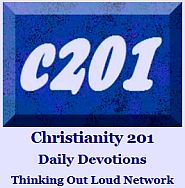As mentioned in part two, usually the first question you ask someone considering a Bible purchase involves trying to qualify which translation they might be interested in. The best way to ask this is, Who is it for? In other words, you want to be told as much as possible about the end user. Young or old? First time Bible reader? Other translations they own? Type of church they attend? Is English their first language?
Much has already been written online about the two broader approaches to translation: Dynamic equivalence and formal correspondence. Lately, some clever marketers have blurred those lines with some new terminology designed to capture interest from those on both sides of the discussion.
While one approach is often termed word for word and the other is thought for thought, really the question is this: To what extent do you retain some of the original forms, and to what extent can you break out of those forms and express the same concept the way we speak today? The challenge is that some of those original forms contain allusions to other Bible passages and you don’t want to rob the Bible of its beauty and symmetry. On the other hand, you don’t want to have to reduce explanations to footnotes, so sometimes just saying things in contemporary language is best. (But then you often find yourself including the historic or literary tie-ins in footnotes instead.)
So here, rather than look at translations in those terms, I’d like to think of them in clusters.
Traditional – Really, with more than 400 years of history, the KJV is in a class by itself here. The person you’re buying one for would have to really be expecting it, or in a church situation where nothing else is permissible.
Formal – With similar syntax and a name association, the New King James Version (NKJV) would fit this category and is still popular in some circles. But so also would the New American Standard Version (NASB), a rigid but accurate translation that is a favorite among Evangelical seminaries and Bible colleges. (See also this article.)
Popular – The New International Version (NIV) is still considered the best-selling English translation and with an update in 2011, isn’t going away any time soon. For Mainline Protestants and some Roman Catholics, the New Revised Standard Version (NRSV) is the translation of choice.
Contemporary – Aimed at the same market that reads the NRSV, the new Common English Bible (CEB) is gaining popularity. Gaining on the NIV is the New Living Translation (NLT), especially among younger Christians. Despite its age, Today’s English Version (TEV, also called Good News Bible or GNT) is still preferred by some readers.
Creative – When The Message was first published with its use of idiomatic language and stripping away of verse numbers, it attracted a lot of attention. Today, The Voice Bible is the choice for those who want something edgy, with everything presented in a dramatic (play script) format. Of course, for those who want to color outside the lines, The Amplified Bible (AMP) has been around for several decades now with its alternative words in brackets. A recent copycat translation, The Expanded Bible offers similar options.
Evangelical Denominations – You’ll find many Baptists gravitating toward the Holman Christian Standard Bible (HCSB) or the new similar-but-different Christian Standard Bible (CSB) and Reformers and New Calvinists choosing the English Standard Version (ESV). The translation philosophy for both is somewhat similar to NASB, with a reluctance to make any risky changes to the text as many learned it in the KJV.
Catholic – The New American Bible (NAB, not to be confused with NASB) is the one most identified with the Catholic Church, but you’ll also find interest in the Catholic editions of the Good News Translation (GNT or TEV), the NRSV, and The Jerusalem Bible.
Easy to Read – The New Century Version (NCV) uses a very basic vocabulary but without seeming childish. The New International Readers Version (NIrV) uses a more choppy sentence structure, but is well-suited to people for whom English is a second language.
Children – The two Bibles in this category are actually the same as in the section above. The NCV is marketed as the International Children’s Bible (ICB), while the NIrV is issued as a part of various branded series that lead the kids into reading a regular NIV. Also doing well in Children’s editions is a more obscure translation known as God’s Word (GW).
Worth Noting – The Story is a Bible story book for adults showing the larger story arc of the Bible in a single narrative. The Kingdom New Testament is a NT written by popular Bible scholar N.T. Wright. And speaking of NT editions, people still seek out The New Testament in Modern English by J.B. Phillips. Also recently arrived is The Passion Translation (TPT) by Brian Simmons, available in a New Testament edition with a few of the Wisdom books added.
While we covered types of Bibles first, remember that translation is your number one consideration. Passage comparison at sites like BibleGateway, BibleHub and Blue Letter Bible are a good place to begin. Hopefully this has at least helped you narrow down your search. Bible translation selection is both a science and an art, and many people have a lot of emotional investment in particular Bible versions. In many respects, perhaps it is better that we put the features explanations first, as you might want to simply select the features you want, and then explore which translations offer those particular editions.
For further reading on Paul’s blog:
- To review this material again, Paul’s blog ran a similar article in 2015.
- Use and misuse of the term “literal” to describe a translation, with links to other items.
- Translators respond to criticism of The Voice Bible.
- A history of the more ‘edgy’ translations.
- The challenges with foreign or cross-cultural translating.
- Why you should be wary of statistics saying which version is the best selling.











Leave a comment
Comments feed for this article